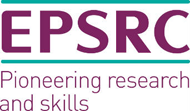Ali Al-Moathin
Ali Al-Moathin
Ali joined the CDT in September 2016, having previously completed a BSc in Maths at the University of Baghdad, Iraq, and a BSc in Electrical Engineering at Blekinge Institute of Technology, Sweden.
CDT PhD Project: Hybrid Integrated Silicon Photonic Transceiver
Supervisors: Professor John Marsh, University of Glasgow, Dr Lianping Hou, University of Glasgow, Dr Hadi Heidari, University of Glasgow and Dr Bob Pollard, Queen's University Belfast.
Nano-electronic integrated circuits have become essential in our world for both industry and personal use. Today, rapid development in technology continuously brings new devices that provide new functionalities to improve our daily life. Laptops, cell phones, tablets, bio-medical sensors, health-care and telecommunication equipment are all examples of electronic devices that are fabricated at the nanoscale.
Up until recently, most electronic products operated independently, without interacting with each other. However, recent high-performance communications make it possible to interconnect them in a sophisticated network. It has become more common for different devices to interact or to at least share data. The interaction between the smartphone and TV to share data or video, transferring data between different devices using the cloud storage technology, remotely access and control devices from different physical places such as computers and many numerous applications are all examples of the new recent technology.
To keep pace with the new development in technology, there is a need to design more efficient communication systems with a higher speed. The performance of most current commercial electronic systems is limited by the speed of the electronic devices from which the systems are built, and the data rate at which the information is transmitted either internally inside one system or externally with other devices. Increasing the electronic speed is achieved by improving the internal architecture of the processors and increasing the number of cores in the chip. Meanwhile, optical communication technology has been used to increase the speed of data transmission. The performance in general, however, is still limited by the speed performance of the electronic circuit.
To overcome the aforementioned limitations, a solution has come with a new technology approach that allows combining the photonics circuit along with electronic circuit on the same chip. This new approach has the potential to solve the limitations of the electronic circuit by designing a hybrid integrated system composed of electrical-optical interface.
In this project, the aim is to design and fabricate elements of a hybrid integrated electrical-optical (E-O) interface system for optical communication applications. This will include a light source, a driver amplifier chip (implemented in a standard CMOS technology) and an optical modulator chip on the transmitter side, and a photodiode and trans-impedance amplifier on the receiver side.
The objectives of this project are:
- To develop a low-cost, high-performance system for optical communication applications
- To integrate a photonic integrated circuit (PIC) and an electronic integrated circuit (EIC) CMOS transceiver
- To develop an optimal architecture for data rates up to 25 Gb/s.





